Berlin is the capital of Germany. Berlin is a cosmopolitan city that has played a significant role in modern history. It is one of the most multicultural cities in Europe, with residents from approximately 190 different nations.
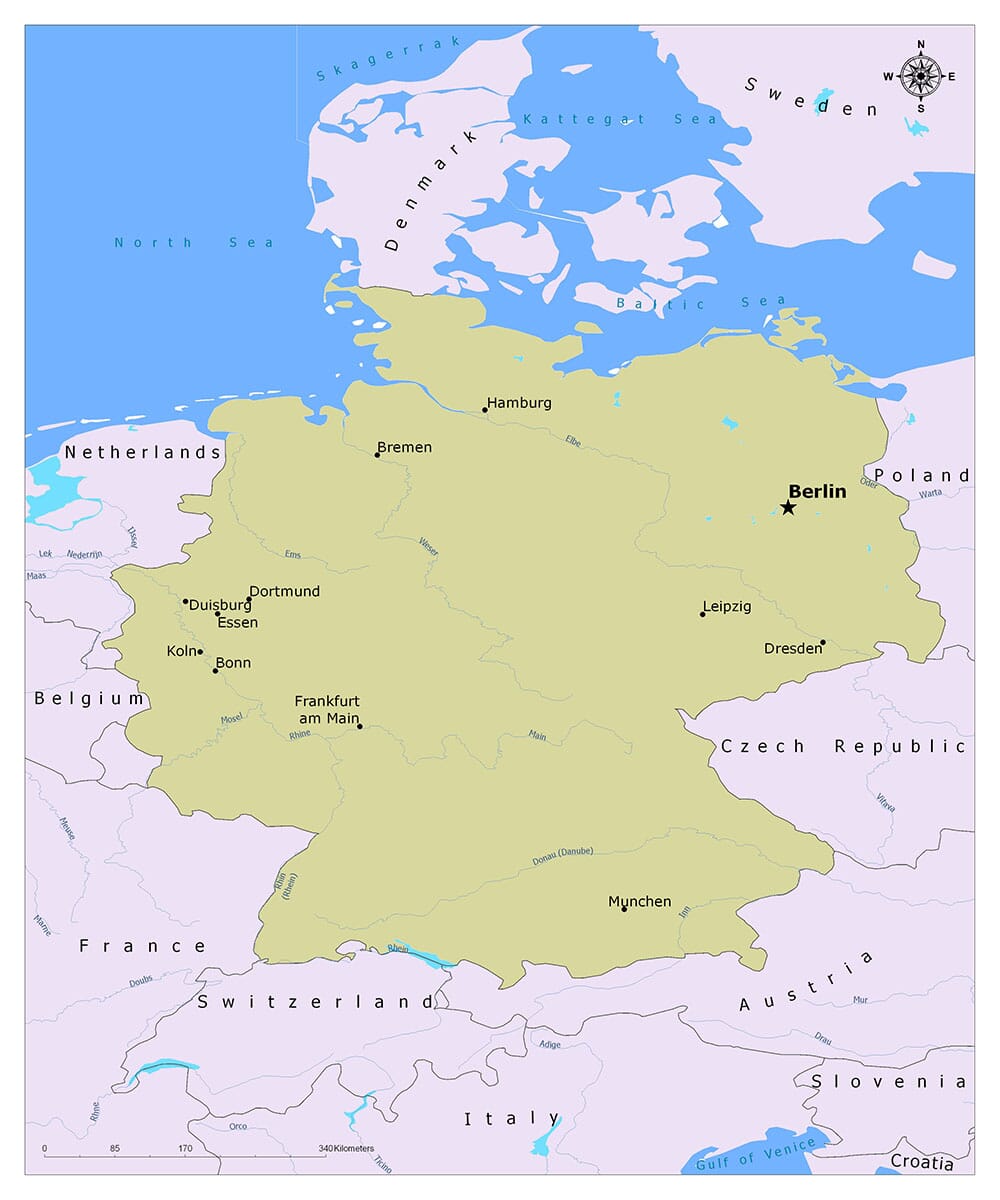
Berlin is the country’s political capital and cultural heart, home to renowned museums, richly diverse art scenes, and historical landmarks.
Where is Berlin?
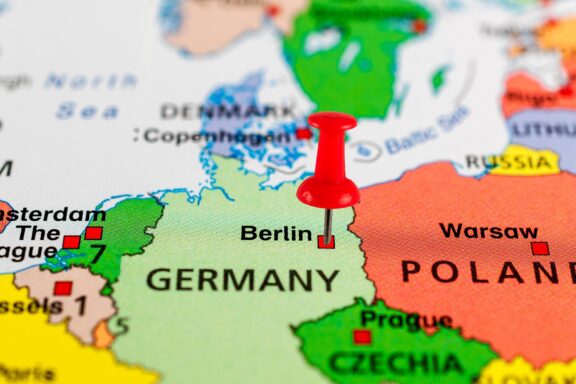
Berlin is located in northeastern Germany. It is approximately 70 kilometers (43 miles) west of the border with Poland. Berlin is built around the River Spree, which runs through the city’s center. The Spree is a tributary of the Havel River, which also flows through parts of the city. There are also numerous smaller rivers and canals throughout the city.
Berlin’s coordinates are approximately 52.5200 °N latitude, 13.4050 °E longitude. This places it roughly in line with southern England in terms of latitude. The city’s central location within Germany and Europe makes it a significant transport hub, connected by a network of high-speed rail, motorways, and a recently opened large international airport.
History of Berlin
Berlin’s history is complex and fascinating, marked by periods of outstanding cultural achievement and devastating wars and division.
The earliest documentation of Berlin can be traced back to the 13th century when it was merely a modest fishing settlement. Berlin and the city of Cölln were officially founded in 1237. Over the centuries, it became necessary due to its location on trade routes.
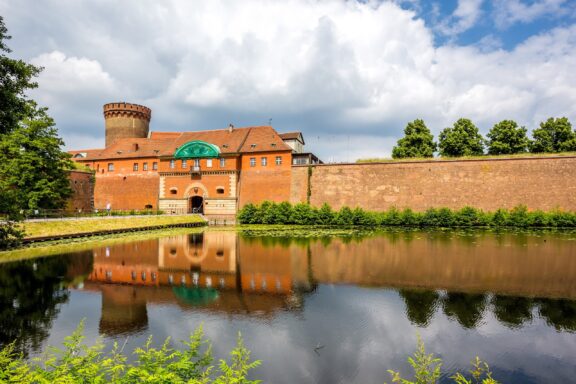
In 1417, Berlin became the capital of the Margraviate of Brandenburg, a major principality of the Holy Roman Empire, under the control of the Hohenzollern family. Berlin continued to grow and develop culturally and politically under their rule.
Berlin’s prominence increased in 1871 when it became the capital of the newly formed German Empire following the unification of Germany under Prussian leadership. During this period, the city saw significant industrial expansion and growth.
World War I
After World War I, Berlin became the capital of the Weimar Republic. However, with the rise of Adolf Hitler and the Nazi Party, Berlin became the capital of the Third Reich. During this time, the city hosted the infamous 1936 Olympic Games.
The town was severely damaged in World War II during the Battle of Berlin in 1945, leading to Hitler’s defeat.
World War II
After World War II, Berlin was divided into four sectors controlled by the US, UK, France, and the Soviet Union. In 1949, the Federal Republic of Germany (West Germany) was established with Bonn as its provisional capital, while the German Democratic Republic (East Germany) was established in the Soviet sector, with East Berlin as its capital. The Berlin Wall was erected in 1961, physically and symbolically dividing the city until 1989.
Berlin Wall
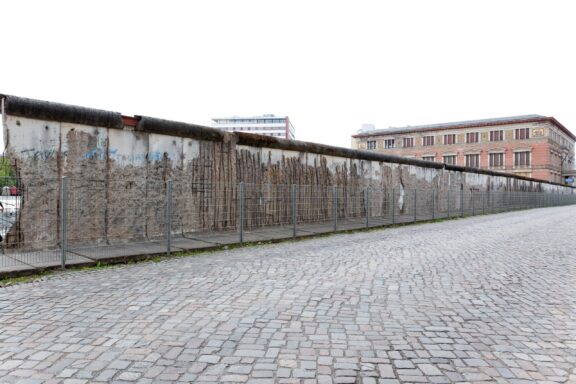
After the fall of the Berlin Wall in 1989 and the subsequent reunification of Germany in 1990, Berlin was again chosen as the capital of the reunified Germany. The German Parliament, the Bundestag, moved back to Berlin from Bonn in 1999, marking the city’s restoration as the country’s capital.
The decision to move the capital back to Berlin after reunification was not without controversy. Berlin’s past as the Third Reich’s capital and the city’s division during the Cold War made some question whether it was the right choice. However, others argued that restoring Berlin as the capital symbolized Germany’s reunification and could help heal past divisions. The decision was formalized in the Hauptstadtbeschluss, or “Capital Decision,” 1991.
Berlin’s tumultuous history has shaped the city, Germany, and Europe. Today, it is a vibrant and multicultural city known for its art, music, and nightlife, but it is also a city where history is ever-present.
Features of Berlin
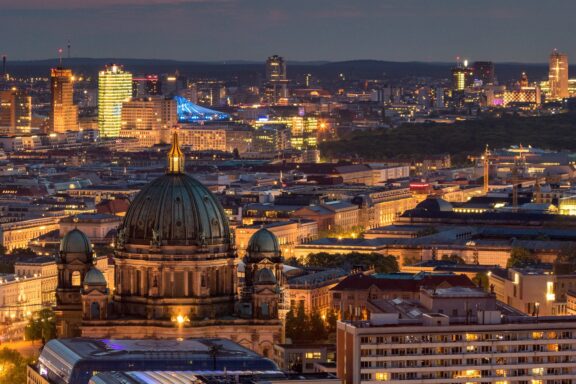
Berlin is a city of remarkable contrasts and celebrated diversity. From the remnants of the Berlin Wall to the iconic Brandenburg Gate, the city is filled with historical landmarks that reflect its rich and tumultuous past.
Berlin is known for its thriving art scene and over 170 museums and galleries. Many world-renowned artists have painted murals on a preserved section of the Berlin Wall.
Despite its urban sprawl, Berlin is surprisingly green. It is home to over 2,500 public parks and gardens, including the expansive Tiergarten, providing plenty of space for leisure and relaxation.
Geography and Climate
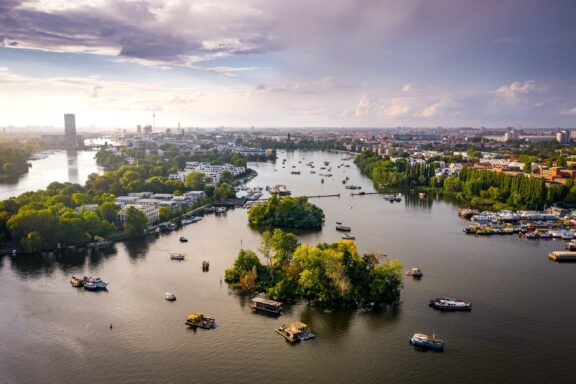
Berlin experiences a temperate seasonal climate where extremes of temperature are rare. Summers are warm, with average high temperatures of 22–25 °C (72–77 °F) and lows of 12–14°C (54–57 °F). Winters can be pretty cold, with average high temperatures of 3°C (37 °F) and lows of -2 to 0°C (28-32 °F). The city gets moderate to heavy rainfall throughout the year, with the wettest months being June and August.
Population
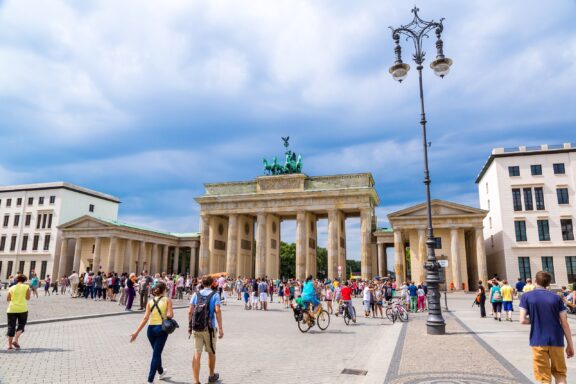
Berlin’s population is approximately 4.4 million, making it the most populous city in Germany. The city is known for its diversity and multiculturalism, significantly contributing to Berlin’s vibrant cultural scene and food diversity.
Berlin is also a young city, with a median age lower than the national average. This is partly due to the high number of students and young professionals drawn to the city’s universities and job opportunities.
Economy
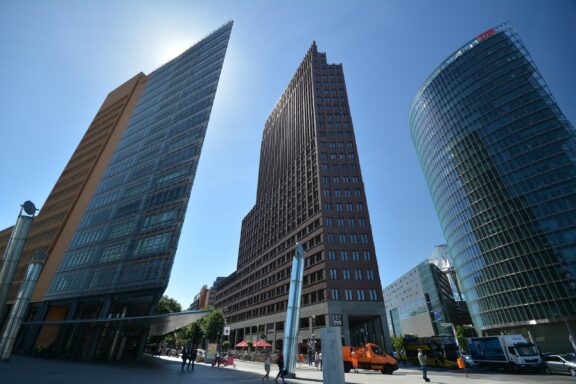
Berlin has a diverse economy focusing on the service sector, which comprises over 80% of all companies in the city. Key industries include life sciences, transportation, information and communication technologies, media and music, advertising and design, biotechnology, environmental services, construction, e-commerce, retail, hotel business, and medical engineering.
After the reunification of Germany, Berlin struggled economically, with high unemployment and many struggling state-owned companies. However, in recent years, Berlin’s economy has been up, driven by a startup boom.
The city has developed a reputation as the “startup capital of Europe,” attracting entrepreneurs worldwide. It’s also an important center for higher education and research.
Things to Do and Places to Visit in Berlin
Berlin, the capital city, boasts many activities and sights to explore. Let’s delve into some of the most frequented attractions and landmarks in Berlin:
1. Museum Island
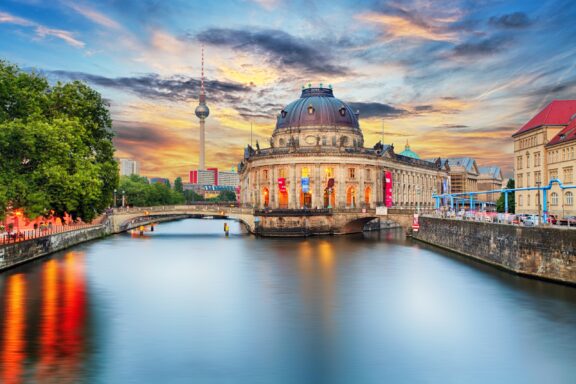
Located in the heart of Berlin on Spree Island, Museum Island is a complex of five world-class museums: the Pergamon Museum, the Bode Museum, the Neues Museum, the Alte Nationalgalerie, and the Altes Museum.
Each museum showcases different types of art and cultural artifacts. Museum Island (Museumsinsel) is a unique ensemble of five museums located in the heart of Berlin, Germany. This UNESCO World Heritage site is a cornerstone of the city’s cultural landscape.
2. Pergamon Museum
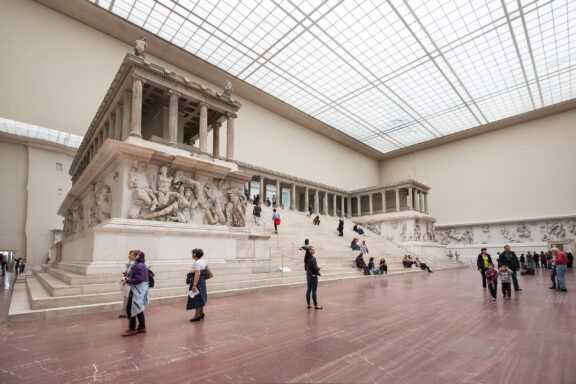
The Pergamon Museum is one of the most visited museums in Germany. It houses three significant collections:
- Antiquity Collection
- Middle East Museum,
- Museum of Islamic Art
The museum is named after the Pergamon Altar, a massive Hellenistic structure that visitors can see up close. Other highlights include the Ishtar Gate of Babylon and the Market Gate of Miletus.
3. Charlottenburg Palace
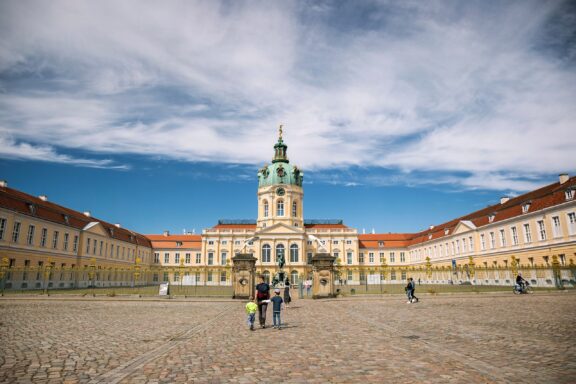
The largest and most significant palace complex in Berlin, the Charlottenburg Palace, dates back to the late 17th century. It’s a beautiful example of Baroque and Rococo architectural styles. Visitors can explore the palace’s opulent rooms and extensive gardens. The palace also houses an impressive fine art collection, porcelain, and silverware.
The palace is home to an impressive collection of 18th-century French paintings and an extensive collection of decorative arts. The Old Palace contains the apartments of Frederick I and Queen Sophie Charlotte. In the New Wing, visitors can see the state apartments and private rooms of Frederick the Great.
4. Memorial to the Murdered Jews of Europe
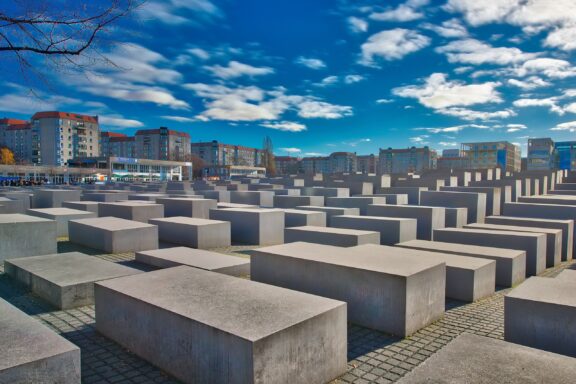
Also known as the Holocaust Memorial, this site is a sobering tribute to the six million Jews killed during the Holocaust. Architect Peter Eisenman designed the memorial officially opened to the public on May 10, 2005, after several years of debate and construction.
Beneath the field of stelae, there’s an underground Information Centre. Here, visitors can learn about the victims of the Holocaust through letters, photographs, and personal stories. The center is divided into four rooms: the Room of Dimensions, the Room of Families, the Room of Names, and the Room of Sites.
The Memorial has faced various controversies, from the design competition to issues with the chosen anti-graffiti coating during construction. It has also been criticized for only commemorating Jewish victims of the Holocaust, which led to the subsequent creation of memorials for other victim groups nearby.
5. Berliner Fernsehturm
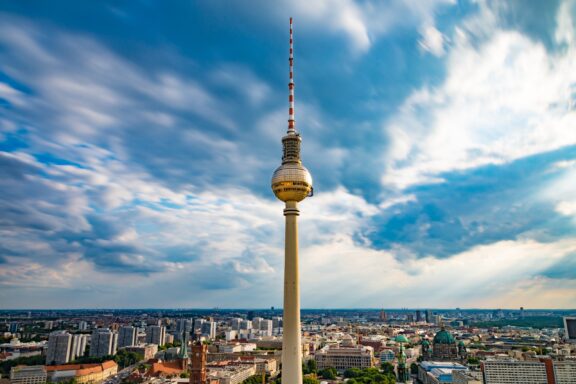
The Berliner Fernsehturm, also known as the Berlin TV Tower, is an iconic landmark and one of the most recognizable symbols of Berlin, Germany. Located in the central district of Mitte, the Fernsehturm stands at an impressive height of 368 meters (1,207 feet), making it the tallest structure in the city.
Completed in 1969 during the German Democratic Republic era, the Berliner Fernsehturm was initially built as a television broadcasting tower symbol of Communist power by the GDR. Still, today it is considered a symbol of the entire city of Berlin and quickly became a popular tourist attraction due to its unique design and panoramic city views.
6. Brandenburg Gate
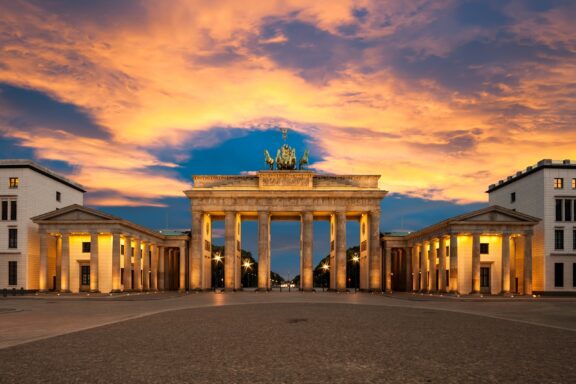
Built between 1788 and 1791, the Brandenburg Gate was modeled after the Propylaea, the gateway to the Acropolis in Athens. Friedrich Wilhelm II commissioned it as a symbol of peace.
On top of the gate is the Quadriga, a chariot drawn by four horses driven by Victoria, the Roman goddess of victory. The Quadriga was added in 1794, a few years after the gate’s construction.
An iconic symbol of Berlin, the Brandenburg Gate is a beautiful neoclassical monument that was once part of the Berlin Wall and, thus, a symbol of the city’s division. Today, it symbolizes German unity and is one of the most visited landmarks in Berlin.
The gate was severely damaged during World War II but was restored from 2000 to 2002 by the Stiftung Denkmalschutz Berlin (Berlin Monument Conservation Foundation).
7. Relax in Tiergarten
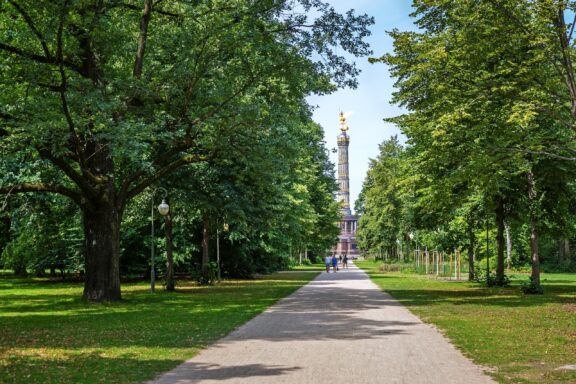
Once a hunting ground for the Electors of Brandenburg, the Tiergarten is now Berlin’s largest and most popular park. The 520-acre park is perfect for relaxing, having a picnic, or taking a leisurely walk. It’s also home to several monuments and the Berlin Zoo.
Initially, the park served as a hunting ground for the Elector of Brandenburg in the 16th century. It was transformed into a public park in the 18th century under the orders of Queen Sophie Charlotte.
Tiergarten is home to several species of birds, mammals, and insects. It is also filled with various trees, plants, and flowers.
8. Take a Boat Tour
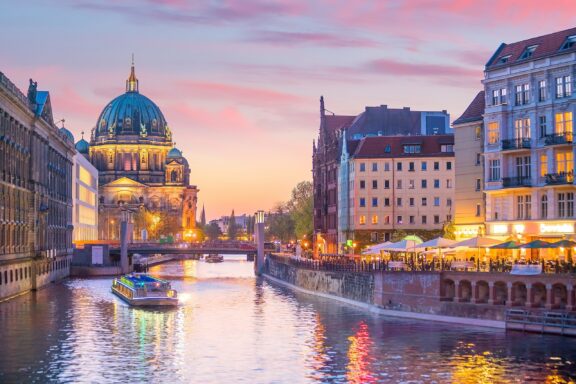
A boat tour on the River Spree offers a unique perspective of Berlin. The river flows through the city, passing its most famous landmarks. Various tour options are available, from short city trips to longer cruises outside the city.
Night tours are a special treat, offering views of Berlin’s beautifully lit skyline. These often include dinner and drinks and can be a romantic or fun way to experience the city.
Remember, while the tours operate throughout the year, spring and summer are the most popular seasons due to the warm weather. However, special tours may be available during the winter holidays with heated boats.
9. Discover the Art Scene in East Side Gallery
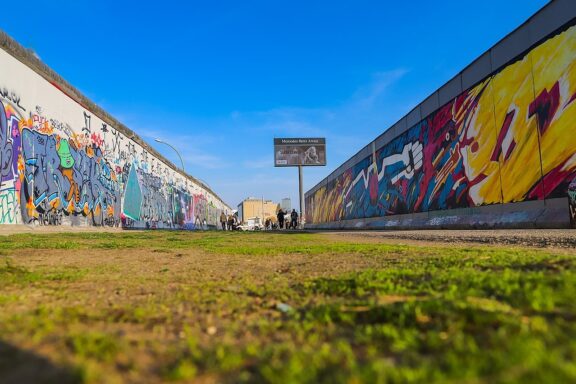
The East Side Gallery is the most extended remaining section of the Berlin Wall. It is about 1.3 km long and is preserved as a memorial for freedom that has been turned into an open-air gallery.
The East Side Gallery features over 100 murals painted by artists from around the globe. The most famous painting on the wall is probably “My God, Help Me to Survive This Deadly Love” (also known as The Fraternal Kiss) by Dmitri Vrubel, depicting Leonid Brezhnev and Erich Honecker in a fraternal embrace.
10. Berlin Wall Memorial
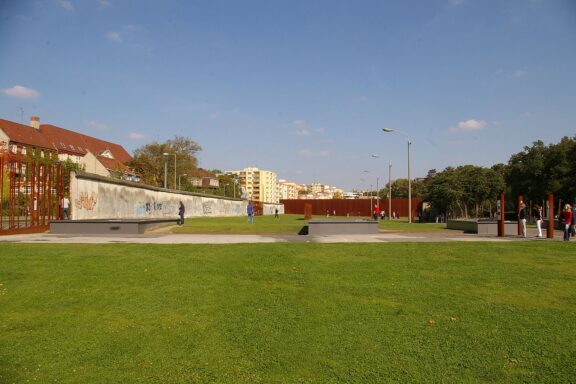
The Berlin Wall Memorial is in the middle of the capital and extends 1.4 kilometers of the former border strip. The memorial contains the last piece of the Berlin Wall with the preserved grounds behind it. Thus, it can convey how the border fortifications developed until the end of the 1980s.
The memorial includes a Visitor Center, an open-air exhibition, the Chapel of Reconciliation, and a Documentation Center with a viewing platform.
11. Reichstag Building
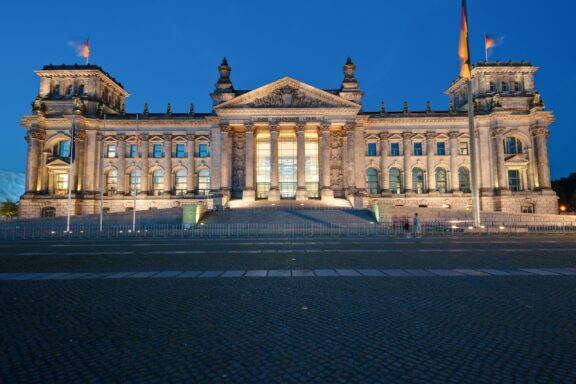
This historic edifice houses the German Parliament and has witnessed the country’s tumultuous history, including fires, wars, and reunifications. Its most distinctive feature is the large glass dome at the top, designed by British architect Norman Foster
. Visitors can ascend the dome and enjoy panoramic city views while observing the political proceedings below.
12. Berlin Cathedral
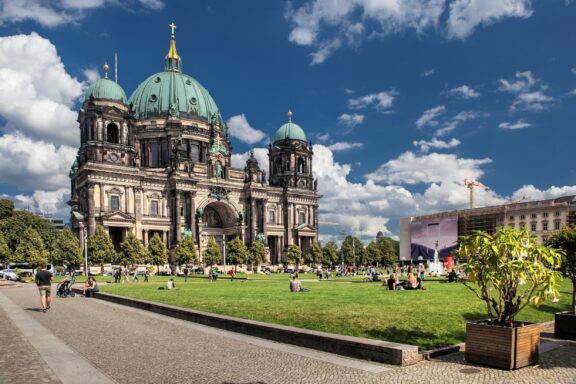
The building was completed in 1905, but the site has been home to several churches since the 15th century. Today’s Berlin Cathedral was built under Emperor Wilhelm II and is an example of the architectural style known as Historicist.
The Berlin Cathedral (Berliner Dom) is the city’s largest and most important Protestant church. With its magnificent dome, it’s a vital part of the city’s skyline. Visitors can tour the cathedral, see the royal crypt, and even climb the crown for a stunning view of Berlin.
The Berlin Cathedral showcases an elaborate interior, with a large organ containing over 7,000 pipes, a sumptuous marble and onyx altar, and a stunning dome that provides panoramic views of Berlin’s cityscape
13. Berlin Zoological Garden
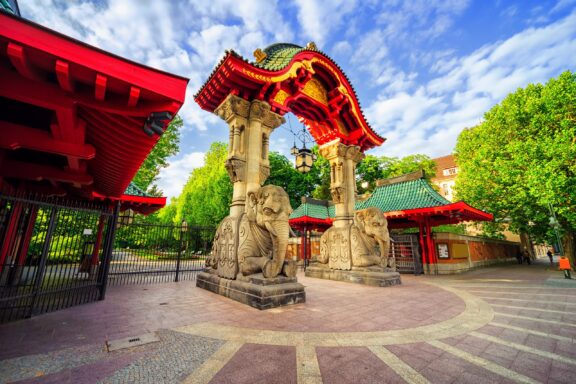
Known as the most species-rich zoo worldwide, the Berlin Zoological Garden is a must-visit for animal lovers. The Berlin Zoological Garden is Germany’s oldest and best-known zoo in the heart of Berlin. Opened in 1844, it covers 35 hectares (86.5 acres) and is home to 1,380 species and over 20,200 animals.
The zoo and its aquarium are known for their commitment to preserving and conserving species. Visitors can witness diverse wildlife in habitats resembling their natural environments, from pandas and polar bears to lions and penguins.
Frequently Asked Questions
What is the best time to visit Berlin?
The best time to visit Berlin is typically in the spring (May-June) or early autumn (September-October) when the weather is most pleasant. However, Berlin has its unique charm in all seasons.
What is the cuisine like in Berlin?
Traditional food in Berlin includes dishes such as:
• Currywurst
• Eisbein
• Berliner Pfannkuchen
• Döner Kebab
How safe is Berlin for tourists?
While Berlin is generally considered safe, there are some areas you should avoid due to reports of scams, pickpocketing, and even armed robberies.
Is Berlin expensive to visit?
Berlin is considered relatively affordable compared to other major European cities like London and Paris. However, prices can vary depending on the time of year and the type of accommodations or activities you choose.
What cultural customs should I be aware of when visiting Berlin?
Berliners are generally straightforward, and they value punctuality. Tipping is customary in restaurants and for services, usually around 10% of the bill. Also, respecting the city’s history and monuments is essential, with many memorializing somber events.
What is Berlin famous for?
Berlin is famous for its history, wall symbolizing the Cold War, diverse and vibrant culture, techno music and clubs, museums, art, the Brandenburg Gate, and the Holocaust Memorial.
How can I get around Berlin?
Berlin has an extensive and efficient public transportation system that includes the U-Bahn (underground subway), S-Bahn (commuter train), trams, and buses. Bicycling is also very popular in Berlin.
Final Thoughts
Berlin is a city well worth visiting. Its rich and complex history, vibrant arts and culture, and mouth-watering cuisine offer something for everyone. From exploring historical landmarks to experiencing the thriving nightlife, every corner of the city tells a story.
Despite its past, Berlin has grown into a diverse and inclusive city that continues to evolve while maintaining a deep respect for its history. Its affordable cost compared to other European capitals makes it an attractive destination. Whether you’re a history buff, a foodie, an art enthusiast, or just a curious traveler, Berlin promises a unique and memorable experience.
Image Sources and Copyright Information
- image-685: © Mappr
- Map with a Red Pin on Berlin, Germany: © PredragLasica/Shutterstock
- Spandau Citadel Reflected in Water: © Sina Ettmer Photography/Shutterstock
- Section of the Berlin Wall on a Paved Street: © gary718/Shutterstock
- Berlin Skyline at Night: © VanderWolf Images/Shutterstock
- Aerial View of River Spree in Berlin: © real Denis Feldmann/Shutterstock
- Crowd of Tourists at Brandenburg Gate, Berlin: © Sergii Figurnyi/Shutterstock
- Modern Skyscrapers at Potsdamer Platz: © Alfred Sonsalla/Shutterstock
- Dusk at Museum Island with Berlin TV Tower in the Background: © TTstudio/Shutterstock
- Pergamon Museum Exhibit Hall with Visitors: © pio3/Shutterstock
- Visitors at the Courtyard of Charlottenburg Palace: © Pani Garmyder/Shutterstock
- Memorial to the Murdered Jews of Europe under Blue Sky: © michelangeloop/Shutterstock
- Berlin TV Tower Against Blue Sky: © SN-Photography/Shutterstock
- Brandenburg Gate at Twilight: © tilialucida/Shutterstock
- Pathway Leading to the Victory Column in Tiergarten Park: © Pani Garmyder/Shutterstock
- Evening Boat Tour on the River Spree: © f11photo/Shutterstock
- Colorful Murals on the Berlin Wall at East Side Gallery: © dronepicr/Wikimedia | CC BY 2.0 Generic
- Berlin Wall Memorial Park under Sunny Sky: © N-Lange.de/Wikimedia | CC BY-SA 3.0 Unported
- Illuminated Reichstag Building at Dusk: © elxeneize/Shutterstock
- Berlin Cathedral on a Sunny Day with Blue Sky and Clouds: © Radoslaw Maciejewski/Shutterstock
- Elephant Gate Entrance at Berlin Zoo: © Boris Stroujko/Shutterstock